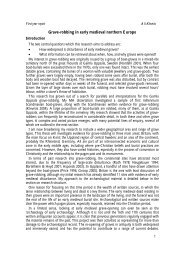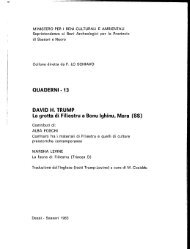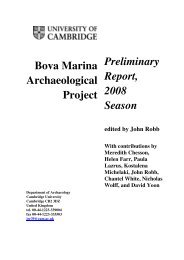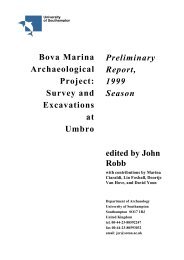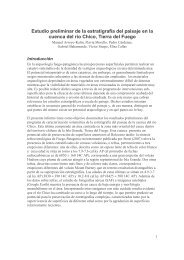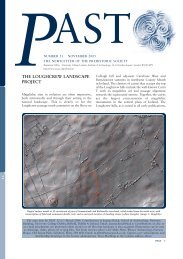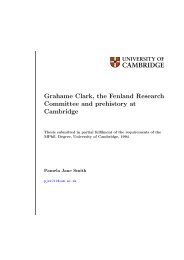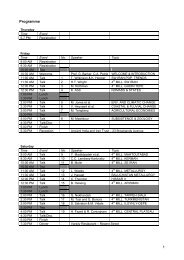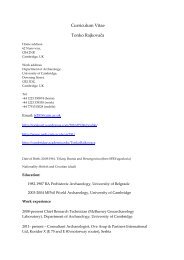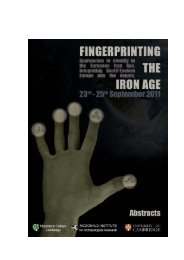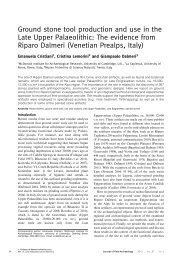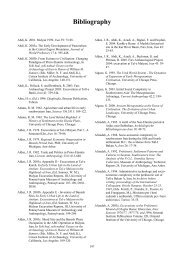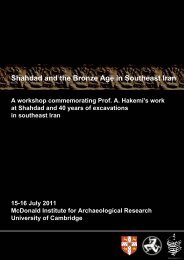The Landscape Context of Valcamonica/Valtellina Alpine Rock-Art
The Landscape Context of Valcamonica/Valtellina Alpine Rock-Art
The Landscape Context of Valcamonica/Valtellina Alpine Rock-Art
Create successful ePaper yourself
Turn your PDF publications into a flip-book with our unique Google optimized e-Paper software.
First Year Report – Craig Alexander<br />
More recent authors (e.g. Arcà 2004, Fossati 2000) have further identified petroglyphs<br />
that they interpret as maps – these were most likely previously subsumed within Anati’s<br />
“Labyrinths” and “Geometric designs and abstract figures” categories.<br />
Examples <strong>of</strong> some <strong>of</strong> the more common petroglyph types are provided in Figures 3 to 12.<br />
Where photographs show the petroglyphs adequately I have used them, otherwise I have<br />
used the tracings recorded by, primarily, Anati’s teams. An unfortunate aspect <strong>of</strong> the<br />
tracings is that they erase the surface topography <strong>of</strong> the rock, thereby losing (or, one<br />
might say, disguising) information potentially vital to interpretation (see, e.g., Barfield &<br />
Chippindale 1997:113). One can see some <strong>of</strong> this impact by comparing Figures 3 and 4<br />
and Figures 7 and 8, which represent the same petroglyphs.<br />
Figure 3 – Cemmo, <strong>Valcamonica</strong> – boulder 1 – animals, Remedello daggers (at upper<br />
right)<br />
Source: Anati 1994:35<br />
4



